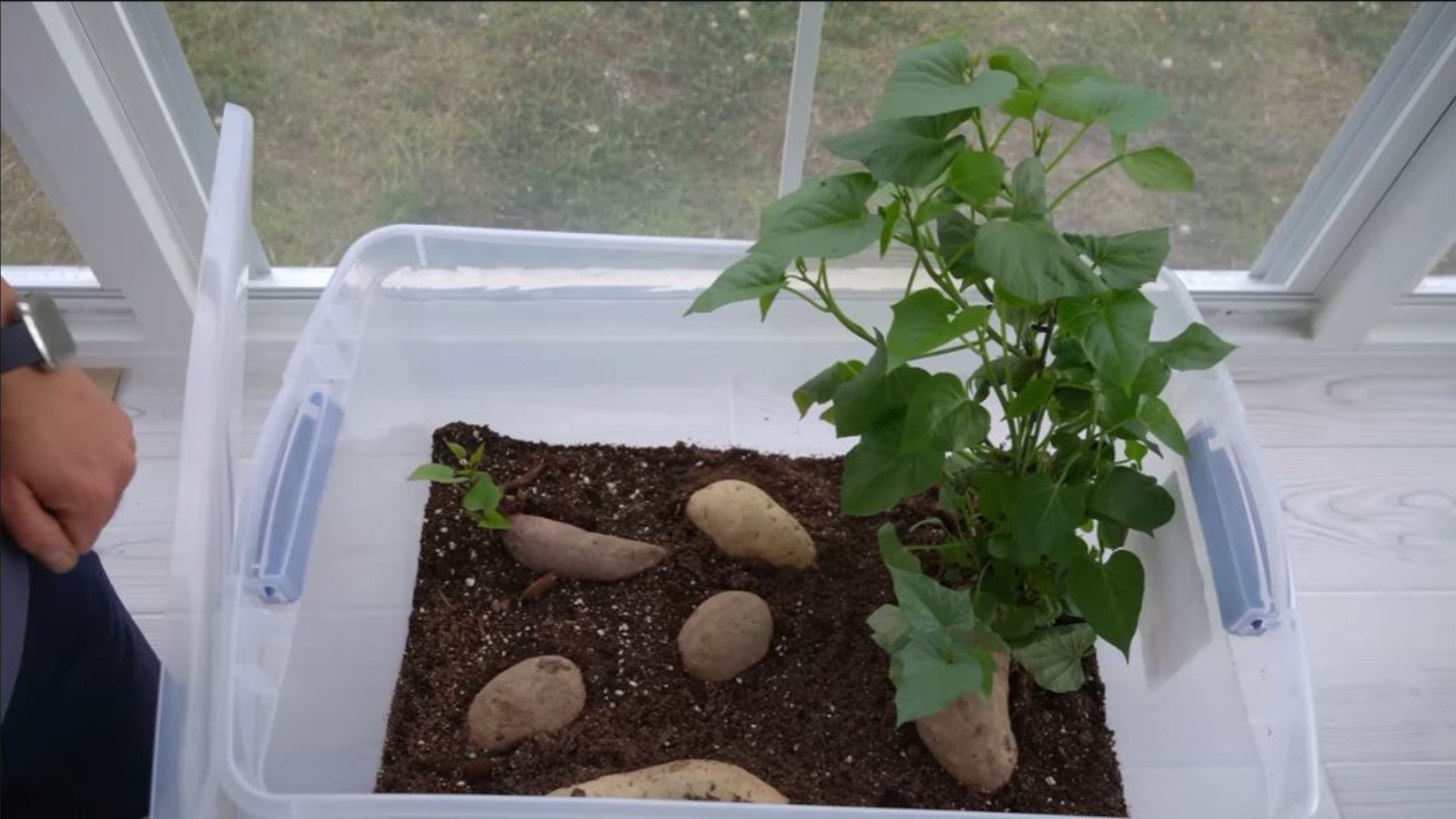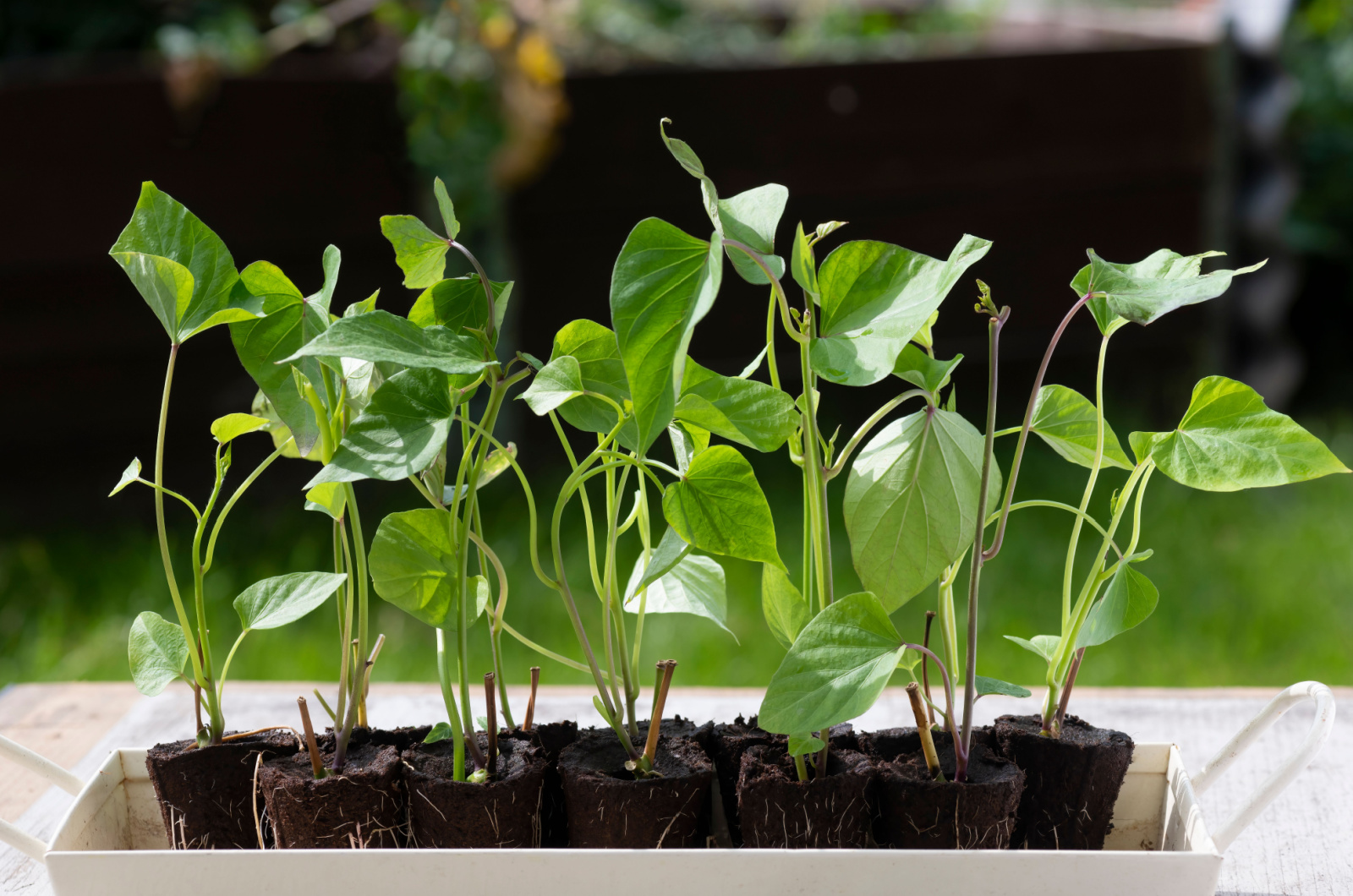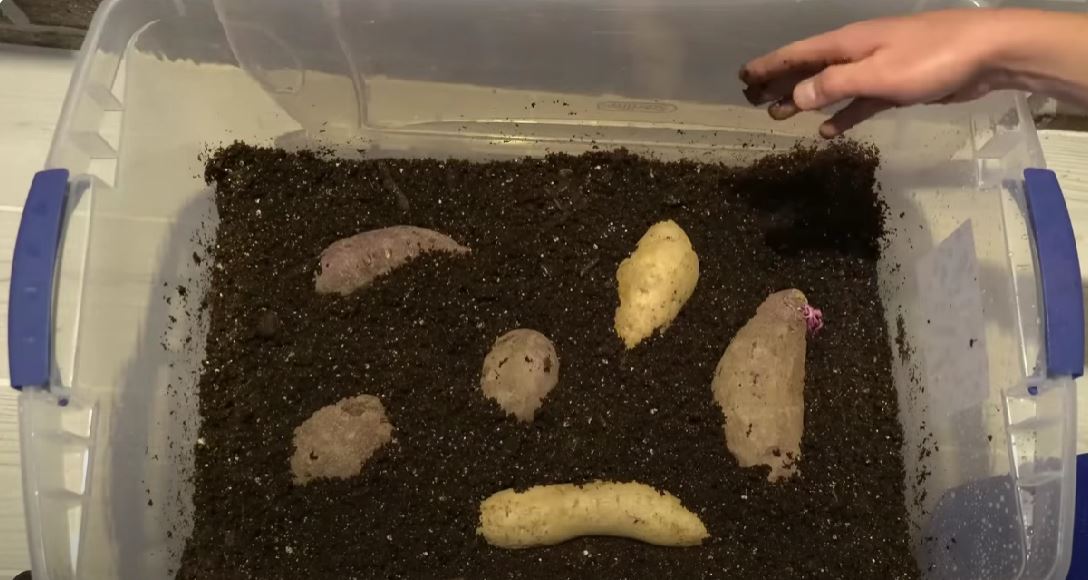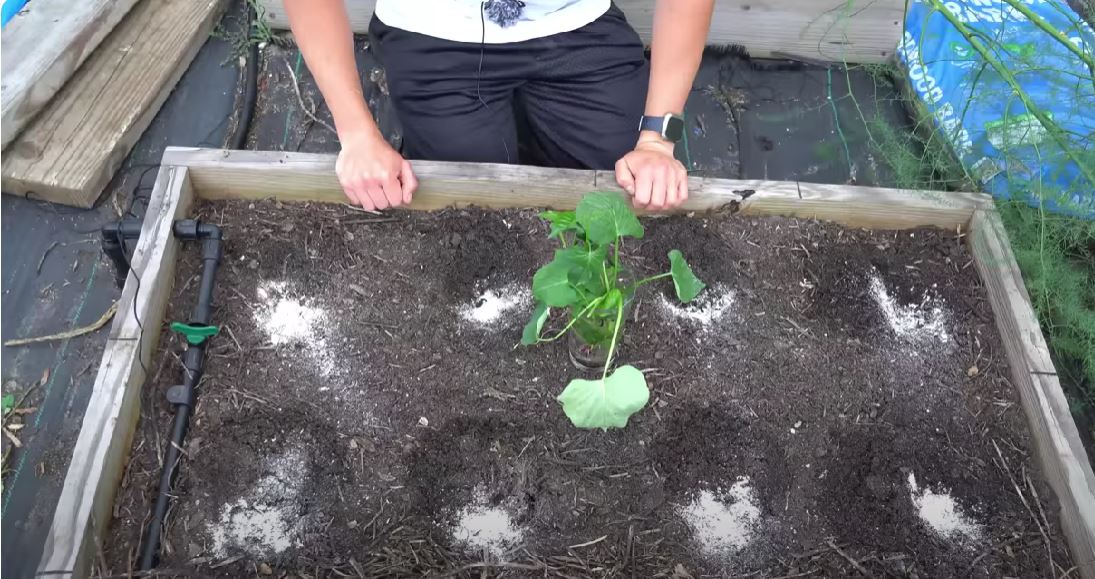Sweet potatoes have been a part of my veggie garden for a long time. These vegetables are super easy to maintain and, with little effort, you get a lot of flavorful crops to harvest.
They are packed with nutrients, which is another reason why you should consider growing them. The great thing is that you don’t need to invest a lot of money to start growing these vegetables in your garden.
All you need to do is go to a grocery store and grab a single sweet potato! You’ll need a few sweet potato slips and to propagate them following the instructions I’ll show you in this article.
Here’s how to grow 100 pounds of sweet potatoes from 1 sweet potato!
Varieties To Select
Growing sweet potatoes is super exciting and you don’t need to be a master gardener to keep them happy and healthy.
When it comes to sweet potato slips, you can make them from any variety. This completely depends on your preferences, so if you like the flavor of a particular variety, go with it.
If unsure, here’s a brief description of the sweet potato varieties that can help you choose.
• Orange-fleshed: The distinctive moist, sweet, and earthy flavor is a hallmark of orange-fleshed sweet potatoes, and includes popular varieties like Beauregard and Covington.
• White-fleshed: Compared to the orange-fleshed varieties, white-fleshed sweet potatoes have a somewhat drier and milder flavor. Their crumbly texture makes them a perfect choice for desserts and sweets. Hannah and Bonia are the two most common white-flashed varieties.
• Purple-fleshed: These varieties are characterized by their nutty flavor and chefs frequently include them in sweet delicacies. Charleston and Okinawan sweet potatoes are purple-fleshed, with the latter as my absolute favorite.
When To Start Sweet Potato Slips
As you already know, the time of planting plays a crucial role in veggie cultivation. For sweet potato slips, the perfect time to plant is after the last frost, when the nighttime temperatures are consistently above 50 degrees Fahrenheit.
When compared to other veggies such as tomatoes and peppers, sweet potatoes can’t be planted immediately after the last frost. Remember, these veggies are native to tropical climates and they don’t have any frost tolerance.
In most US regions, the nighttime temperatures will reach the recommended range approximately 3-4 weeks after the last frost.
Now, let’s discuss when to start sweet potato slips indoors. You need to check the last expected frost date for your area and plan to start sweet potato slips about 60-90 days before.
How To Start Sweet Potato Slips In The Soil
You may have already heard of rooting these delicious veggies in water using the toothpick method.
However, what I dislike about water propagation of sweet potatoes is the time needed for root development. I don’t consider myself an impatient person, but if there’s a faster way of doing something, I’ll go with it.
When it comes to these root veggies, I’m more for using soil as a rooting medium. All you need is a plastic sterile container and pre-moistened potting mix; make sure it’s not too wet and there aren’t any water drips when you squeeze the soil.
Now take your sweet potatoes and bury them halfway into the potting mix. As time progresses, your sweet potatoes will generate new growth and develop the slips.
Place the lid on the container but make sure to leave it a little bit cracked to trap humidity and allow some fresh air to go in at the same time. As mentioned earlier, these veggies are used to tropical conditions and higher humidity levels.
Now find a location for the container with your sweet potatoes that receives at least 6 hours of sun every single day. The sun will keep your sweet potatoes warm and encourage bud growth, which will result in many slips that we will cut off and root later.
It typically takes a month for your sweet potatoes to produce new roots and an additional two months for slip development.
How To Remove And Separate Sweet Potato Slips
Once the slips are a few inches tall, it’s time to remove them from the parent sweet potato plants.
Remember that sweet potatoes develop nodes along the vine and the new roots that develop from the sweet potato base will continue to grow after planting.
Now cut off the sweet potato slips and divide them into a few sections, making sure each has a node attached.
Now you have two options. The first one is to take a few pint glasses, fill them with clean and fresh water, and put your sweet potato slips in them.
Even though you’ll hear a lot of growers claim that this step is a must, I highly disagree. I skipped this step last year and each of my sweet potatoes developed a huge number of slips.
I simply plant them directly in my raised bed outdoors when nighttime temperatures increase.
The Best Way To Plant Sweet Potato Slips
Now it’s time for me to show you how to plant the separated slips in the ground. I always plant my sweet potatoes late in the afternoon because I want to avoid the harshness of the sun.
The slips will acclimatize to the new environment through the night.
When preparing your bed for planting sweet potato slips, make sure to make holes about 1 foot apart. You can add some organic slow-release fertilizer and bonemeal in each hole to boost nutrient levels.
Put your sweet potato slips in holes, making sure the root nodes are completely buried below the soil line.
The last thing to do is irrigate your newly planted slips thoroughly!
Here’s a video for growing sweet potatoes from a single crop!
As the season progresses, you’ll notice plenty of new growth and be rewarded with an amazing harvest! Make sure to harvest and store your sweet potatoes correctly so that you can enjoy their heavenly taste for a long time!






